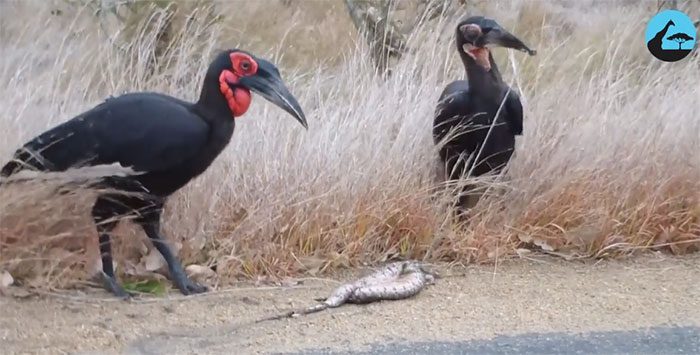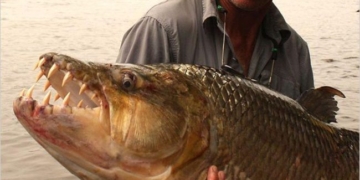The family of ground hornbills risk their lives while attempting to kill two puff adders to feed their young.
Video: Latest Sightings
Seventy-year-old tourist Piet Blignaut witnessed the hunting behavior of a pair of ground hornbills in Kruger National Park, South Africa, as reported by Latest Sightings on June 29. Initially, they walked along the path, foraging on the ground. Suddenly, the hornbills became agitated and stared intently at something in the distance. As Blignaut and his group approached, they discovered two puff adders mating, oblivious to the impending danger.
Puff adders are notorious for their quick strike speed of just a quarter of a second and their venom, which causes excruciating tissue necrosis. These snakes remain motionless for months to ambush prey, earning them the nickname “living coffins.” Like many other snakes, they mate by seeking out partners. Male puff adders release a distinctive scent to attract females. When a female is ready to mate, they engage in a twisting dance and flick their tongues.

The family of ground hornbills kills a pair of puff adders to feed.
The male ground hornbill calculated its attack precisely. Its eyes were focused on the two venomous snakes. With full force, it charged at the first puff adder. Caught off guard, the snake was struck down on the ground by the relentless attack of the hornbill. The female and the chick quickly joined in, targeting the remaining snake and successfully killing it as well. However, the hornbill family did not stop there. They continued to peck and step on the snakes’ bodies to ensure the prey was motionless before they began to eat.
Ground hornbills are among the most unique bird species in Africa. As the world’s largest cooperative breeding birds, adult ground hornbills stand about one meter tall, featuring long curved bills and bright red facial skin that makes them highly visible as they stride across the savannah in search of lizards, snakes, small mammals, and other birds. Ground hornbills typically nest in tall trees, but habitat loss has reduced their range to just 10-30%. As a result, their population has also significantly declined.


















































